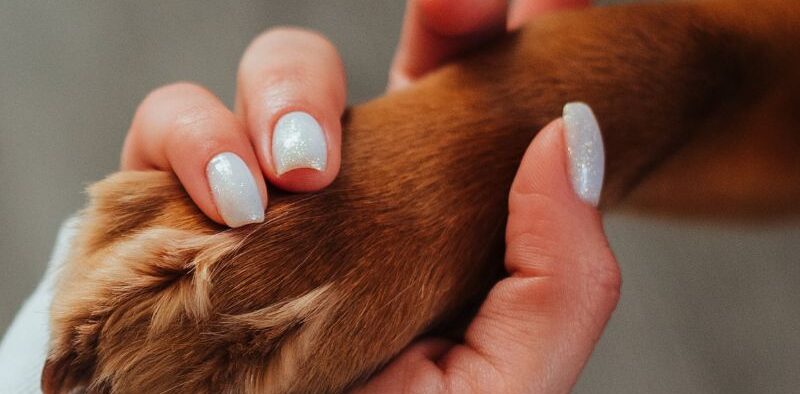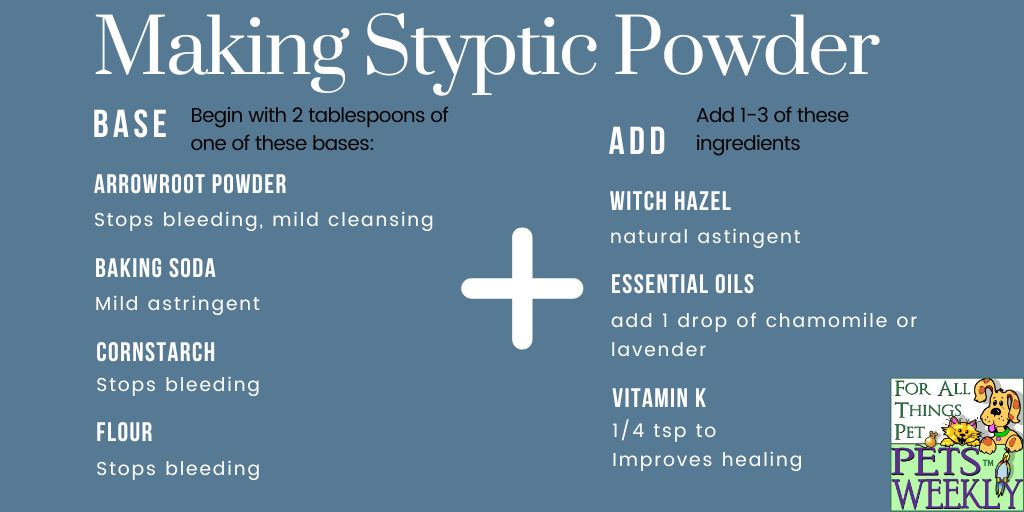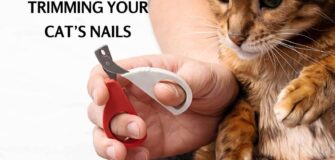Your Guide to Pet Styptic Powder
Share

Ever clipped a nail a tad too short, sending a geyser of crimson erupting from your furry friend’s paw? Don’t panic! Styptic powder is your secret weapon against minor pet meltdowns (the four-legged kind, that is). This handy guide will transform you from grooming novice to bleeding-busting hero, no cape required.
The Science of Styptic Powder
What is this magical dust, you ask? Styptic powder is like a tiny army of clot-forming soldiers, rushing to the scene to plug up leaks and stop the blood flow. It comes in handy for nail-trimming mishaps, tiny cuts, and those oh-so-common grooming snafus that leave your pet looking like they’ve tangoed with a rose bush.
This handy little hero comes in a variety of forms, from powders and gels to handy pencils, making it easy to tame tiny terrors like:
- Clipped nails: Say goodbye to nail-biting nail trims with a quick dab of styptic powder.
- Grooming gone wrong: Nicks and scrapes from brushing or trimming? Styptic powder to the rescue!
- Minor cuts and scrapes: From playful pounces to adventurous scrambles, styptic powder is your on-the-go first-aid kit.
Store-Bought Styptic Powder
Styptic powder can be made from several different ingredients. So, let’s take a look at the standard ingredient lists and the pros and cons behind each.
Store-Bought Styptic Powders:
- Main Ingredients: These usually include aluminum sulfate, ferric subsulfate, or potassium alum for clotting, sometimes with soothing aloe vera or pain-relieving benzocaine.
- Popular Brands: Miracle Care Kwik Stop, MediStyp, and Remedy+Recovery are some well-known options.
- Pros: Convenient, ready-to-use, and they often contain pain relief.
- Cons: Can be pricey, may not be suitable for all pets (check ingredients for potential allergies).
These are some common ingredients you’ll find in store bought styptic powder. We included our own notes, so be sure to read them through and use discretion!
- Aluminum Sulfate: This MVP constricts blood vessels, stemming the flow quicker than a squirrel on roller skates. While it is generally recognized as safe, it can cause irritation to the skin and eyes, and can cause respiratory issues if inhaled. Ingesting large amounts can cause gastrointestinal irritation. We do tend to avoid this agent with our own pets.
- Ferric Subsulfate: Another clot-crazy crusader, ferric subsulfate speeds up the clotting process, turning that mini-fountain into a gentle trickle. It works by clustering blood particles together to stop bleeding. It is only used topically and should not be ingested. As a general rule, we try to avoid this with our own pets.
- Potassium Alum: This is a chemical compound made up of potassium, aluminum, and sulfate. It’s like a combination of different elements, kind of like baking a cake with flour, eggs, and sugar. This gentle giant not only stops bleeding but also acts as a mild antiseptic, keeping those wounds squeaky clean.
- Diatomaceous Earth: This microscopic army of fossilized algae absorbs excess moisture, helping the clot form faster. It’s truly a hero in any household (and can even be used to repel and kill insects).
- Benzocaine (Anesthetic): Some styptic powders come with a built-in pain reliever, like a tiny hug for your pet’s boo-boo. However, keep in mind that the FDA reecently issued a safety bulletin on this that it should not be used in children under 2 years old. Our rule states that if it’s not safe for kids, it’s not safe for pets.
- Aloe Vera (Soothing Agent): This natural healer reduces inflammation and irritation, making the whole experience less ouch-y. We love aloe vera for all of the right reasons!
If you don’t feel like you want to buy from the store, we have some DIY solutions for you below!
DIY Styptic Powder Formulas
Basic Ingredients: Any of these ingredients can be used as your base. While you can technically blend one or more of these in a bowl, you really only need to choose one. More is not always better.
- Arrowroot Powder: This traditional home remedy has been used to heal wounds from poison arrows, scorpion stings, and gangrene. It can also be used to stop bleeding and prevent infection. It’s a great powder to keep in your kitchen cabinet and your medical cabinet! Best of all, it’s gluten free and naturally contains iron, copper, and vitamin B.
- Cornstarch: This highly absorbent base helps stop the bleeding while being gentle on your pet’s skin.
- Baking Soda: A natural antiseptic and mild astringent, baking soda keeps things clean and promotes clotting.
- Flour: Similar to cornstarch, flour absorbs moisture and adds bulk to the powder.
Add a few little custom touches:
- Witch Hazel: This natural astringent tightens the skin and promotes clotting, like a tiny witch doctor for wounds.
- Chamomile: This soothing herb reduces inflammation and irritation, making your pet feel all warm and fuzzy (in a good way).
- Essential oils: Lavender and tea tree oil can be helpful, but use them with extreme caution and only after significant dilution. These oils can be toxic to pets in concentrated amounts. Remember, essential oils are potent for pets (especially cats), so use them with extreme caution and always dilute with a fractionated coconut oil or jojoba oil!
- Vitamin K: A sprinkle of this vitamin K magic can boost your pet’s natural clotting power, but consult your vet before adding it to the mix. You can purchase vitamin K powder here.

Remember…
- Avoid harmful additives like garlic powder or alum, and store your DIY concoction in a sealed container for maximum freshness.
- Avoid harsh chemicals or anything you wouldn’t put on your own skin.
- Sterilize before storing. If you dip your pet’s paw into a bottle, get rid of the bottle. Just sprinkle some into a bowl to use. Keep your DIY powder container clean and dry to prevent bacterial growth.
How to Use Styptic Powder
Now, let’s get practical! Here’s how to use styptic powder like a pro:
- Assess the situation: Is it a minor nick or a more serious wound? If the bleeding is heavy or doesn’t stop after a few minutes, consult your vet immediately.
- Prep the area: Gently clean the wound with clean water or sterile saline solution.
- Apply the powder: Use a cotton swab or gentle pressure to apply a thin layer of styptic powder directly to the wound.
- Monitor and care: Keep an eye on the wound for signs of infection and follow your vet’s advice for aftercare.
- Calm the cutie: A little TLC goes a long way! Offer your furry friend some soothing cuddles and praise to ease any anxiety.
Remember that styptic powder is a temporary fix, not a magic cure. For deeper wounds or persistent bleeding, always seek professional veterinary care.
With this guide and a sprinkle of styptic powder, you’ll be a pet-parent pro, ready to handle those tiny terrors with confidence and compassion. So go forth, groom fearlessly, and remember – a little knowledge goes a long way in keeping your furry friend happy and healthy!










